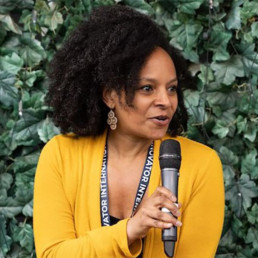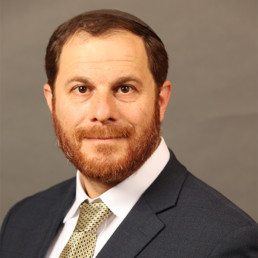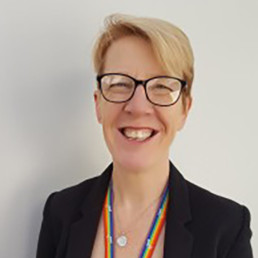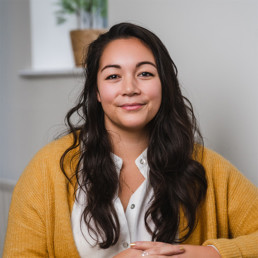Why Every Child Deserves to Hear Their Own Song

Written by Matthew Dix
Matthew Dix is a primary school teacher of 17 years. He continues to work as a teacher whilst working as a primary reading consultant across Nottinghamshire. He is the Founder of resource website Manic Street Teachers and has recently launched 'Musician of the Month' to create a culture of musical appreciation and understanding across schools, with a focus on diversity and inclusion.
Growing up, music wasn’t just background noise – it was how I made sense of the world. It was my mum playing the piano, it was watching her dance to ABBA and playing, of all things, a mandolin! It was my dad blasting heavy metal one minute and Vivaldi the next. Nothing quite says ‘peaceful Sunday morning’ like Iron Maiden shaking the windows!
As I reached adolescence, my heroes ranged from Tupac Shakur to Freddie Mercury, from John Lennon to Annie Lennox. Following their lives taught me that struggles were universal and at the end of a struggle, there can still be success. Behind every composition, every lyric, every guitar solo was a person with a story – often one of resilience against all odds.
Music took centre stage when I formed an indie band in the early 2000s. It wrote songs, often with the children’s help, for primary school subjects when I began my career as a teacher. It was a focus of mine when I created the music resources for ‘Manic Street Teachers’. Music has always been in the foreground of whatever I do.
A decade ago, I took a job in an inner-city school in Nottingham with 98% of children having English as an additional language. In fact, there were 52 different languages spoken in total. And yet, the music curriculum offered very few mirrors of themselves or windows to other worlds. A colleague and I decided to introduce a new musician every month in the hope of engaging children who seemed vacant during singing assemblies, and often unable to discuss and share their likes and dislikes in music lessons.
It wasn’t until we chose Nusrat Fateh Ali Khan as a musician one month that parents started to leave emails, children started to talk and a buzz started to make its way through school. I remember a child telling me that their parents listened to him at home. We shared his life, his trials and tribulations, his achievements and videos of his performances. Children could explain his words and what they meant. They were fascinated to learn that he had come to England in 1985 and brought Qawwali music (a form of Sufi Islamic devotional singing originating in India) with him. Children finally saw themselves and their families in our curriculum.
👉 Free Sample (Nusrat Fateh Ali Khan) – sign in required
It got us thinking. What if a girl thought that she could never be a classical musician because she looked nothing like Mozart, Beethoven or Bach? Well, we created resources all about Florence Price, whose compositions were forgotten until, just 16 years ago, when a whole collection of her work was rediscovered in a dilapidated house on the outskirts of St. Anne, Illinois.
What about a child who believes music is impossible with a disability? We shared Stevie Wonder’s story, Jacqueline du Pré’s story, and we shared how Joni Mitchell had to detune her guitar to learn to play another way after polio affected her hand. Let’s show them how these artists found ways to keep playing, no matter what. The show must go on, as Freddie Mercury said!
We live in a global world – our music curriculum should reflect that. Instead of saying, “Let’s learn African drumming,” let’s say, “Let’s learn about Babatunde Olatunji, a Nigerian drummer who learned by immersing himself in the culture and following the master drummers in his village, eventually being given a cowbell and then various Yoruba drums, took his craft to America, became an important friend to Martin Luther King Jr., and became a world-wide sensation!”
If a child thinks you can’t play music when you’re old, then share the story of The Buena Vista Social Club – how Ry Cooder, a producer from the US, had a twist of fate when musicians from Mali had their visas delayed so he ended up in Cuba, reuniting forgotten musicians like Ibrahim Ferrer, who was still shining shoes to make ends meet. The musicians, most of whom were over 70 years old, finally had a chance to tour the world with their music.
👉 Read our EYFS eBook (Ibrahim’s Song)
Context is always king, and every child loves a story. I believe the person behind the music is as important as the music itself, and becomes the bridge to another world. Teaching children to empathise helps them feel less detached from the music they are studying. Music bridges cultures, generations, and experiences in ways that words alone sometimes cannot.
That’s why I created Musician of the Month – a simple, accessible way for teachers to bring diverse musical stories into their classrooms. It’s directly linked to The Model Music Curriculum and the 9 Protected Characteristics and, as the site develops, we hope it will help schools show every child that they too can be a musician. To a child in school, the right musician, with the right song, at the right moment could well hit the right notes!
👉 Musician of the Month + Free Sample (David Bowie)
World Book Day 2025

Written by Robert Davies
Rob Davies is Associate Assistant Headteacher at Calderstones School in Liverpool. This role involves leading on anti-racism in education, sharing practical strategies, reflections, and initiatives to create a more inclusive, representative, and equitable school. He shares insights on decolonising the curriculum, diversifying reading materials, and fostering anti-racist practices in schools.
Another year, another World Book Day—same costumes, same characters. Harry and Hermione? Check. Little Red Riding Hood? Of course. The Gruffalo? Naturally. And let’s not forget Mrs. Trunchbull, stomping through the halls. Sound familiar? Thought so.
But here’s the thing—World Book Day can be so much more. It’s time to move beyond the usual suspects and reimagine it through a truly diverse lens. Let’s make it an event where every student sees themselves in the stories we celebrate.
Every year, World Book Day celebrates the magic of stories. But whose stories are we telling? Who do they inspire? When books and characters overwhelmingly reflect white, middle-class experiences, whose voices are missing? Are we selecting a diverse range of books that offer all children equitable opportunities to see themselves?
If not, isn’t it just Book Day?
At its core, World Book Day aims to “promote reading for pleasure, offering every child and young person the opportunity to have a book of their own.” But if we fail to approach it through an anti-racist lens, are we truly serving all students?
The Representation Gap in Children’s Books
In the UK, 33.5% of school-aged children come from ethnic minority backgrounds. Yet, between 2017 and 2019, only 7% of children’s books featured characters from these cultures—and just 5% had a Black, Asian, or Minority Ethnic main character.
Research shows that when children see themselves in books, it shapes their sense of identity and possibility.
Despite limited representation, excellent books exist that help students feel seen, foster belonging, and cultivate a love of reading. But do schools actively seek them out?
The issue goes beyond just introducing diverse books. What if teachers haven’t read them, or don’t understand their significance?
Whose culture has capital?
With a predominantly white teaching workforce (Runnymede Trust, 2020), how often is World Book Day shaped through an anti-racist lens? One of the biggest motivators for reading is emotion—how books make us feel (Dungworth et al., 2004). Naturally, educators promote books that resonated with them in childhood, shaped by their own experiences.
If most books being championed reflect the same narrow cultural perspectives, what message does that send? Who do these books inspire—and who gets left out?
Research further supports this. More children from ethnic minority backgrounds than white backgrounds say they don’t see themselves in what they read (40% vs. 30.5%), with Black students feeling this most acutely.
Making It a World Book Day
If World Book Day is to truly reflect all students, schools must take active steps to make it more inclusive. That’s exactly what we did at Calderstones School this year.
As one of Liverpool’s largest secondary comprehensive schools, diversity is our strength. But we recognised that World Book Day needed to reflect that diversity, ensuring all students felt represented and engaged.
So, we embraced the ‘world’ in World Book Day. We focused on books and authors from a variety of cultures and languages, fostering conversations about students’ mother tongues and cultural backgrounds.
We collaborated with Greenbank Primary School and Leeds Beckett University to involve primary school students and Global Ambassadors. Together, they read books from their home countries in their native languages—including Arabic, Basque, Farsi, French, Greek, Mandarin, Polish, Russian, Urdu, and more.
By showcasing this linguistic and cultural diversity, we highlighted the vital importance of representation in education. The readings were recorded, edited, and shared on the school’s social media. The response? Overwhelmingly positive. For many in our community, this was the first time their language and heritage were visibly celebrated in school.
How to Rethink World Book Day in Your School
If we are serious about delivering a truly inclusive World Book Day, here’s lets start with the following: 1. Move Beyond the Same Old Costumes
Rather than dressing up as characters from GCSE texts, consider why these books dominate the curriculum. Less than 1% of GCSE students study a book by a writer of colour—so why reproduce that marginalisation on World Book Day?
- Conduct a Student Voice
Ask students:
- What books would you love to explore?
- Do you see your culture and heritage reflected in the school library?
- What stories are missing from the shelves?
- Use these insights to shape book selections and discussions.
- Explore Translated Literature
Many beloved English books originated in other languages—Pinocchio was originally Italian. What other global stories could students discover? World Book Day can be an opportunity to highlight the rich traditions of storytelling from around the world.
Final Thought: A Call to Action
By embracing the ‘world’ in World Book Day, we made it more meaningful for our students. This is a step in the right direction—but it can’t stop here. Schools must challenge traditional reading lists, elevate diverse voices, and ensure that every child sees themselves in the stories they read.
We can’t diversify the teaching workforce overnight, but we can broaden our thinking. We must ensure that we view events like World Book Day through an anti-racist lens.
Because if World Book Day doesn’t include all stories, is it really World Book Day at all?
Diversifying English Literature texts: Five ways to get your schools to invest

Written by Jessica Tacon
Jessica Tacon is second in charge of the English Department at City of London Academy Highgate Hill and is a member of NATE’s (National Association for the Teaching of English) ‘Reviewing Literature’ working group. She created The Right Writing campaign which aims to improve racial diversity in English Education.
The title of this piece reflects an ongoing challenge in education, but also an opportunity. While many schools and educators have made strides in diversifying their English curricula, there’s always room for progress. Students across the country deserve to see themselves reflected in the texts they study, while also being exposed to a wide range of perspectives. Diverse literature enriches learning experiences, fosters empathy, and ensures every student feels valued.
Here’s a brief overview of why a diverse and inclusive curriculum is essential:
- Representation matters: Research by Penguin Random House revealed that many students never study a text by a writer of colour, apart from a few poems in their GCSE studies. They also found that only 7% of students study a text by a woman, and just 0.1% study a text by a woman of colour. Every child deserves to see their experiences and identities reflected in what they read. Not only does this enhance engagement and enjoyment, but it can also lead to better academic outcomes.
- Retention in English Studies: When students don’t see themselves or diverse perspectives in their English lessons, they may perceive the subject as irrelevant. This may lead to a drop in the number of students pursuing English at A-level, which in turn impacts representation in higher education and English-related fields. A diverse curriculum can break this cycle by making the subject more relatable and meaningful.
- Broadening horizons: While representation is crucial, it’s equally important to introduce students to experiences, cultures, and voices beyond their own. Literature has always been a bridge to other worlds, offering insights into lives that differ from our own. This is a fundamental aspect of fostering curiosity and empathy in young people.
- Addressing historical imbalances: Historically, the English curriculum has often overlooked diverse voices. As educators, we have the opportunity (and responsibility) to address these imbalances and create and embed a curriculum that is inclusive, honest, and representative of a wide range of experiences.
Despite these clear benefits, the teaching of a diverse and inclusive range of literature texts isn’t yet the norm in all schools.
Support (and essential investment) is needed from senior leads in schools, and multi-academy trusts, to make this a reality. It is challenging as individuals may not be English specialists, but the points above highlight how a change in English can have a far-reaching impact on young people.
With this in mind, I would like to explore the common barriers to change and five solution-focused strategies to help schools embrace a more inclusive curriculum.
Strategies
Strategy 1: Emphasise the positive impact on students
Barrier: Leadership may focus on the potential challenges rather than the benefits of inclusivity.
Solution: Highlight the research-backed benefits of a diverse curriculum. For instance, the research by Penguin Random House shows students are more engaged when they see themselves reflected in their studies, and they perform better academically. Explain how inclusive texts also broaden students’ horizons, fostering empathy and critical thinking by exposing them to new perspectives and cultures. Frame change as being much less of a risk than continuing to teach a set of texts which actually may be disengaging students in the English classroom.
Message for leadership: A diverse curriculum creates a more engaged and motivated student body, which translates to higher achievement and a stronger school culture.
Strategy 2: Frame diversity as a shared responsibility
Barrier: Leaders may feel diversity initiatives are an additional challenge in an already complex system.
Solution: Present inclusivity as a professional and moral responsibility to address historical imbalances in education. Position the school as a leader in creating a curriculum that prepares students for life in a diverse and interconnected world.
Message for leadership: Diversity isn’t just a ‘nice-to-have’; it’s essential for fostering a fair and well-rounded education. Implementing an inclusive curriculum aligns with the school’s duty to provide all students with an equitable experience.
Strategy 3: Offer practical solutions to time and workload challenges
Barrier: Leaders may worry that introducing new texts will increase workload for already overstretched staff.
Solution: Reassure them that high-quality, ready-to-use resources are available. Platforms like BBC Bitesize offer support materials on a range of texts including some recently added to diversify exam board text options, such as My Name is Leon and Leave Taking. BBC Bitesize, as its name suggests, is a great jump-off point for exploring a diverse range of texts by breaking them down into manageable chunks.
Message for leadership: Implementing an inclusive curriculum doesn’t need to add extra strain. Leverage existing resources and expert support to streamline the process.
Strategy 4: Address staff confidence with professional development
Barrier: Some educators may feel unprepared to teach unfamiliar texts or discuss sensitive topics.
Solution: Advocate for investment in professional development such as training sessions or workshops that help staff gain confidence in teaching diverse texts. Highlight that introducing new material can be professionally invigorating, offering opportunities for growth and fresh perspectives. For instance, one text added to AQA’s English Literature GCSE as part of their diversity drive is Princess and the Hustler by Chinonyerem Odimba. It’s a modern, engaging text that explores rich themes, literary techniques, and historical context, making it a rewarding teaching (and learning) experience.
Message for leadership: Building staff confidence through professional development ensures successful implementation while reinvigorating teaching practices.
Strategy 5: Present change as achievable and incremental
Barrier: Leaders may see curriculum reform as an overwhelming, all-or-nothing process.
Solution: If this is the case, advocate for a phased approach, starting with small but meaningful changes (such as introducing one or two new texts). You could suggest piloting new texts with specific classes before scaling up.
Message for leadership: Curriculum change doesn’t need to happen all at once. An incremental approach makes the process manageable while demonstrating the positive impact of inclusive texts.
Looking ahead
It’s important to acknowledge that change in education is rarely quick or easy. However, the potential benefits far outweigh the challenges. A truly diverse and inclusive curriculum not only enriches students’ academic experiences but also prepares them to navigate an increasingly interconnected world.
Of course, diversifying texts is just one part of creating an inclusive school environment. Staff training, teaching approaches, and the broader school culture all play critical roles in ensuring that diversity is embedded meaningfully and authentically.
Every student deserves an education that values their identity and broadens their horizons. As we move forward, let’s commit to making this vision a reality.
To access the BBC Bitesize GCSE English Literature collection, please visit: https://rebrand.ly/7d51da
An Educator’s Introduction to Culturally Responsive Teaching

Written by Eleanor Hecks
Eleanor Hecks is a writer who is passionate about helping businesses create inclusive and diverse spaces. She serves as the Editor in Chief of Designerly Magazine.
Today’s classrooms are more diverse than ever before. Students come from various backgrounds, whether cultural, linguistic or socioeconomic. They bring unique perspectives and experiences.
As the educator, your responsibility now extends beyond delivering the curriculum – it also involves fostering an inclusive environment where all your students feel valued, heard and empowered to achieve their true potential. Culturally responsive teaching is an essential solution.
What Is Culturally Responsive Teaching?
CTR is a research-based pedagogical approach that connects students’ cultural backgrounds with their learning. It focuses on recognizing the assets students can bring into the classroom instead of focusing on perceived shortcomings. CRT helps students engage in deeper learning and develop higher-level academic skills by making these connections.
Theories such as Lev Vygotsky’s Zone of Proximal Development and Jerome Bruner’s Scaffolding underpin CRT’s emphasis on building upon students’ knowledge. These approaches support the importance of connecting new learning to an existing schema, which is central to CRT.
Unlike teacher-centered traditional models, CRT emphasises the student. It integrates diverse cultural aspects into the instruction, tailoring the education process to the student’s needs. Since learning is meaningful and engaging, it promotes a sense of belonging, even among students belonging to minority or marginalized groups.
Why Is Culturally Responsive Teaching Necessary?
Implementing CRT is becoming increasingly necessary in today’s educational landscape. The traditional one-size-fits-all approach no longer addresses the realities of today’s classrooms. Here’s why CRT is growing in demand.
Addresses Diversity in Classrooms
Student ethnicity is growing. A 2022 summary released by the Department of Education showed that the student population comprises 6.5% Asian pupils, 6% mixed or black pupils and 2% belonging to other ethnic groups. These statistics reflect the growing diversity of classrooms in the UK. Standardised teaching methods fail to cater to this diversity, which leaves minority students disengaged and underrepresented.
Strengthens Student Engagement
Students are more likely to connect with and retain information when they see their identities reflected in the curriculum. CRT helps make learning more relevant to their lived experiences.
Promotes Equity and Inclusion
CRT seeks to reduce disparities in education by creating equitable learning environments that recognise and celebrate every student’s identity. Inclusive strategies benefit minority students and open opportunities for the majority to learn as the two groups participate in intercultural conversations and learn about each other’s cultures.
Prepares Students for a Globalised World
There is a direct, positive correlation between cultural and emotional intelligence. CRT equips students with the skills to understand and respect other people’s viewpoints.
Students who grasp that there are different cultures and beliefs grow into adults whose emotional intelligence (EI) makes them compassionate, open-minded and culturally sensitive. This emotional intelligence is responsible for between 27% and 45% of job success as a whole, emphasizing the importance of supporting students’ EI before they enter the workforce.
Develops Critical Thinking
Incorporating multicultural perspectives in classrooms challenges students to think critically about social issues, providing them additional context to understand the wide world around them.
How to Apply Culturally Responsive Teaching in Your Classroom
Adopting culturally responsive teaching doesn’t require completely overhauling your current working methods. Small, intentional changes can create significant impacts. Here are practical steps to integrate CRT into your teaching practices.
- Activate students’ knowledge by connecting with their cultural or personal experiences.
- Tie your lessons to real-world events or contemporary issues so students see their value beyond the classroom.
- Ensure your curriculum and resources reflect diverse authors and cultures.
- Consider your classroom’s physical and visual setup to be more inclusive of minority groups.
- Build strong student-teacher relationships and learn more about your students’ interests, cultural backgrounds and identities.
- Create opportunities for group projects and assignments.
- Attend workshops, read research and collaborate with colleagues to refine your pedagogic practices.
The Impact of Culturally Responsive Teaching
Culturally responsive teaching can transform both students and teachers. For your pupils, it strengthens their sense of identity, boosts academic achievement and allows for deeper engagement with their learning experience. For educators, it provides an opportunity to make a meaningful impact in their students’ lives as they contribute to a more equitable education system. Embracing CRT enables students to prepare for the multicultural world beyond their classrooms.
Making mutineers? Why building digital citizenship in the data age is crucial for educators promoting diversity, equity and inclusion

Written by Jonny Tridgell
Jonny began his career as a secondary school teacher in 2009 and has since been a head of sixth form, head of department and lead practitioner for EDI. He has also worked in teacher education as a mentor, curriculum tutor and general tutor on the University of Oxford PGCE. He completed his MSc in Education (Digital and Social Change) at Oxford in 2024. He is currently working as Equality, Diversity & Inclusion Data and Insights Officer at Jesus College, Oxford, alongside roles as a teacher, teacher educator and researcher.
Imagine two sailors. The first navigates his life on ship with diligence and skill, but little concern for how this affects others. His approach to the sea is entirely instrumentalist. The second sailor takes a different approach; she knows her job as well as the first, but she is awake to the power structures that surround her, the web of exploitation and trade that underpin her work. She is committed to making change and serving justice, by mutiny if she must.
Here, following Schober (2014), the sea stands in for the digital world. Our lives are increasingly lived digitally, with our actions and interactions transformed into data that is tracked, sold and mined for the benefit of multinational corporations. Many of us take an instrumentalist approach to this, ignorant (by choice or by indoctrination) of the consequences this process can have, especially for those often rendered invisible by society. This includes those marginalised in our communities and those in the Global South, who bear the brunt of exploitative extraction processes that can involve appalling human rights abuses and untold exacerbation of the climate crisis. Studies have shown that datafication negatively affects those who are already harmed by society (e.g. Zuboff’s 2019 Surveillance Capitalism; Eubanks’ 2018 Automating Inequality) and there are concerns about how schools collect and use data, as well as who funds and designs the programmes we use in our classrooms.
How do we encourage students to become more like the second sailor? There is a great deal of excitement about building digital skills, including in relation to AI, but we need greater engagement with what it means to use the digital responsibly. Shannon Vallor’s excellent Technomoral Virtues (2016) applies virtue ethics to existing online and this could lay groundwork for how we teach young people to be digital citizens, preparing them to make informed choices about the technology they use and how they treat others in the digital sphere. This is not about frightening young people or turning them off technology, but rather teaching them to understand the responsibility they bear and that what they do online has real, physical consequences. Vallor notes the need for us to achieve a new “practical wisdom” that includes an understanding of the digital. This is also where the link to citizenship is crucial – the online world is vast and interconnected and we must encourage young people to see themselves as members of an international community, with attendant responsibilities.
What does this look like in reality? Research is increasingly critical of one-off educational experiences like assemblies or drop days, given that these often have limited impact over time. Rather, it is crucial that we as teachers weave this digital citizenship education into our students’ lives. This might be by developing checks before we recommend or adopt new technology (e.g. asking who funds this and what data will be gathered); this could happen at the level of senior leaders or in our own classrooms. We might model the responsible and careful use of search engines and AI, noting the ways that both can reproduce inequality (as shown harrowingly by Noble’s 2018 study The Algorithms of Oppression). This might also include teaching explicitly about the challenges and benefits of digitalisation and datafication in our lessons, perhaps with an RE lesson considering what it means to be human or a mathematics lesson on how statistics are used online. Lessons can be learned from work done on decolonising curriculum here, as well as the ways in which colleagues incorporate other duties like SMSC, CEIAG and fundamental British values. Digital citizenship can and should become part of the goal of schools in the UK, alongside the more instrumentalist approach to digital skills being promoted so widely already.
As life becomes increasingly online – as we all become sailors on this wild ocean – it is crucial that we are preparing our students to look out for those who are often already marginalised or forgotten, driven out of sight and therefore out of mind. No one sailor can do this on her own – she needs a teacher.
If you’re interested in hearing more about Jonny’s work or how to incorporate digital citizenship into your teaching, his MSc thesis “Making Mutineers: Reimagining religious education for the promotion of virtuous digital citizenship” can be read here. You can also sign up to the in-person programme Jonny is running with the University of Oxford’s Bodleian Libraries here.
Empowerment, Inclusion, and Storytelling: A New Approach to History Education

Written by Dana Saxon
Dana Saxon is an educator, writer, and family historian who seeks to address global inequities in education. Her organisation, Ancestors unKnown, changes the way pupils learn about history, themselves, and the world around them, providing opportunities for them to learn about marginalised histories and stories from their own communities.
Traditional history education can sometimes feel stale and uninspired – a series of dates and old white men who seem to have little or no relevance to the lives of today’s children. This approach, heavily focused on Eurocentric perspectives and the accomplishments of a select few, can leave many students feeling excluded and disconnected from the past.
But, as even Ofsted explained in their 2023 report about history education, “Every pupil is entitled to encounters with the richness of the past and the complexity of historical enquiry”.
A New Approach: Student Stories at the Centre
What if we reframed history education? What if we centred the learning experience around the unique stories of each child?
This is the vision driving Ancestors unKnown, a unique approach to history education that empowers young people by weaving their personal narratives into the larger context of local and global history.
At the heart of our methodology lies the belief that every child’s story is a valuable piece of the historical puzzle. We encourage students to explore their own family and community histories through oral histories and archival research. By interviewing elders, collecting family artefacts, and delving into local archives, children uncover the unique stories of their ancestors and the elders in their community, including their struggles, their triumphs, and their contributions to society.
Then, while our students are empowered to personalise historical research, we help them connect these personal narratives with the untold and often marginalised histories that have shaped our world. As a result, students learn about the contributions of diverse communities, stories about migration, struggles for social justice, and other hidden stories that lie beneath the surface of conventional historical narratives.
The Benefits of Ancestors unKnown
Our integrated approach fosters a profound sense of belonging and empowerment. When children see how their own stories connect to the larger historical narrative, they develop a deeper understanding of their place in the world. They begin to see themselves as active participants in history, not just passive observers.
Furthermore, by sharing their family histories with their classmates, children gain valuable insights into the diverse experiences and perspectives of those around them. This fosters empathy, understanding, and a greater appreciation for the people and communities around them.
With our approach, Ancestors unKnown is making history curriculum more inclusive and equitable. By centring the experiences of diverse communities and highlighting the contributions of marginalised groups, we challenge traditional narratives and create a more representative understanding of the past.
“Our community interviews were really successful!” shared a primary school teacher about their Year 5 Ancestors unKnown project.” We interviewed adults from South America, England, France, China and Nigeria! The children asked some really interesting questions and really enjoyed listening to the different family and community stories.”
Bringing Ancestors unKnown to More Classrooms
Ancestors unKnown provides schools with a toolkit and ongoing support to implement our programme during one school term for Y5 or Y6. We also offer teacher training, parent/community engagement workshops, and access to a network of local historians and storytellers as guest lecturers.
We believe that by empowering teachers, students, and their families with the tools and knowledge to uncover their own historical narratives, we can create a more inclusive and engaging learning experience for everyone.
Ready to transform history education in your school? Learn more about our programme and contact us to bring Ancestors unKnown into your classrooms.
Let’s work together to empower the next generation of historians to tell a different, more inclusive story about the past – a story that includes their ancestors.
Developing a PSHE Curriculum on Antisemitism, based on the teaching of Rabbi Lord Jonathan Sacks

Written by Rabbi Cobi Ebrahimoff
Rabbi Cobi Ebrahimoff is UK Director of Education at The Rabbi Sacks Legacy, where his primary focus is to bring the teachings of Rabbi Sacks into schools and spearhead the development of innovative educational resources.
INTRODUCTION
Within living memory of the Holocaust, after which the world vowed “never again,” antisemitism has returned.
Rabbi Lord Jonathan Sacks offers a unique approach for students to understand why antisemitism is a danger for every single member of British society. In this four part series of lessons, students will explore:
- What is antisemitism?
- The stereotypes, prejudice and discrimination that Jewish people face
- The evolution of antisemitism and how it affects Jewish people today
- How antisemitism may affect them and how to combat it
BACKGROUND TO ANTISEMITSIM
Antisemitism is complex and often contradictory, making it difficult to define. Historically, Jews were persecuted for opposing reasons – being both poor and rich, communists and capitalists, isolated and too integrated.
So, what is antisemitism? It’s not just disliking someone for being different – that’s xenophobia. And it’s not simply criticising Israel – that’s part of democratic debate. Antisemitism is far more dangerous. It’s about persecuting Jews and denying them the right to exist as Jews, with the same rights as everyone else.
Over time, antisemitism has evolved, shifting from religious persecution in the Middle Ages to racial hatred in the 19th and 20th centuries, and now, targeting Israel’s right to exist. This new antisemitism uses human rights as a guise for prejudice.
Why should this matter to all of us? Antisemitism reflects a broader inability to accept difference. History shows that hate starting with Jews never ends with Jews. It’s a warning sign of threats to freedom, humanity, and the dignity of difference – issues that concern us all. That’s why combating antisemitism is a fight we must undertake together.
The Rabbi Sacks Legacy (RSL) is proud to present a new PSHE curriculum designed to provide a comprehensive framework for educating students about the historical and contemporary aspects of antisemitism through the prism of Rabbi Sacks’ unique approach. The curriculum aims to enrich students’ understanding of moral responsibility and create a deep appreciation of social diversity.
The curriculum meets Ofsted’s requirements to promote SMSC (Spiritual, moral, social, and cultural) development and fundamental British values. Under Section 5 inspections, Ofsted will consider how British values are promoted within schools, including the importance of tackling dis- crimination. Education on antisemitism directly supports these objectives, demonstrating the school’s commitment to creating a safe and inclusive environment for all students.
COMPREHENSIVE, READY-TO-USE RESOURCES FOR TEACHERS
Designed for teachers by teachers, the RSL PSHE curriculum comes complete with all the resources needed for seamless implementation. Teachers are provided with:
- Fully developed lesson plans with clear learning objectives aligned with SMSC and Departmental requirements.
- Differentiated activities to challenge higher-ability students and support those who need additional help, ensuring inclusivity in every classroom.
- Interactive multimedia content to engage students and bring complex topics to life.
- Assessment for learning tools to measure student progress and reinforce key challenges and benefits of living in a diverse society.
- Detailed teacher not and PowerPoint presentations, making it easy to deliver high-quality lessons with confidence.
To support high-quality delivery, teachers have access to high-quality training sessions and the opportunity to book expert-led workshops, ensuring that the curriculum is not only implemented effectively but also becomes an integral part of the school’s ethos.
ELEVATE YOUR SCHOOL’S COMMITMENT TO FUNDAMENTAL BRITISH VALUES WITH THE RSL PSHE CURRICULUM
In today’s educational landscape, the responsibility of promoting fundamental British values within schools has never been more significant. The Department for Education mandates that all schools actively promote values such as democracy, the rule of law, individual liberty, mutual respect, and tolerance of those with different faiths and beliefs. These values are integral to students’ spiritual, moral, social, and cultural (SMSC) development, forming the foundation of a cohesive and inclusive society.
The RSL PSHE curriculum empowers schools to fulfil these essential requirements. Developed with the insights of Rabbi Sacks, a leading voice in fostering interfaith dialogue and understanding, this curriculum is designed to address the challenges of antisemitism while broadening students’ understanding of diversity and respect for all.
CURRICULUM ALIGNMENT WITH SMSC DEVELOPMENT AND FUNDAMENTAL BRITISH VALUES
Promoting Mutual Respect and Tolerance
At the core of the curriculum is the “dignity of difference” principle, a concept championed by Rabbi Sacks. Through this lens, students are encouraged to explore and appreciate the benefits of our diverse society. The curriculum challenges students to confront prejudice, including antisemitism, and embrace differences with dignity.
Fostering Individual Liberty
The curriculum empowers students to think critically about the world around them, promoting individual liberty by encouraging them to form opinions.
Reinforcing the values of Democracy and the Rule of Law
The curriculum highlights the importance of the rule of law in protecting individual rights and minorities. It also promotes democratic values by encouraging discussions and debates, respecting different viewpoints, and understanding the processes that uphold democracy.
Enhancing SMSC Development
Through carefully structured sessions with clear learning objectives, differentiated tasks, and comprehensive assessment opportunities, students are guided to reflect on their moral responsibilities, develop social awareness, and cultivate a deep understanding of cultural diversity.
COMMIT TO EXCELLENCE IN EDUCATION
The RSL PSHE curriculum is more than just a teaching tool. It’s a commitment to fostering a school environment where every student learns the value of respect, tolerance, and moral responsibility. By integrating this curriculum into your school’s PSHE sessions, you are meeting Ofsted’s requirements and playing a vital role in shaping a generation that values diversity and upholds the principles of a just and inclusive society.
Build bridges. Break barriers. Adopt the RSL PSHE curriculum today!
How to Drop-in LGBT+ References Across the Curriculum

Written by Mel Lane
Mel Lane (she/her) is Head of Education at Pop’n’Olly. She has been a primary school teacher and teacher trainer for nearly 30 years and worked in schools on LGBT+ inclusion policies with thousands of children and school staff. Mel is a co- author of What Does LGBT+ Mean? (Pop’n’Olly, 2021).
When I first started trying to be LGBT+ inclusive in my lessons I was really concerned that it might prompt a lot of off-topic and probably negative comments from the children in my Year 6 class. We were learning about possessive apostrophes and I tentatively put the following on the board as a warm-up discussion:
Where should we put the apostrophe?
- The girls cloakroom
- The childrens playground
- Davids boyfriend
I stepped back and held my breath, waiting for the silly comments, the sniggers and the inevitable disruption and NOTHING HAPPENED! I literally couldn’t believe it.
At that stage, I was very new to inclusion work. We had nothing inclusive stuck up in the classroom, There’d been no inclusive assemblies and we’d just briefly touched on inclusion in one PSHE lesson. Surely, they’d never handle this, I thought. How wrong I was. The class quietly got on with the work and we discussed exactly where the apostrophes should go and why we’d put them there.
I think growing up and starting my career under Section 28 (the law that silenced discussion around LGBT+ issues in school) had given me such a strong sense that I ‘shouldn’t’ be talking about these issues in school. The children (aren’t children awesome!) showed me otherwise. They showed me that just dropping in references to LGBT+ lives and showing they’re just another way to be a human, was more than fine for them.
Now, I’m a huge fan of the drop-in for ALL TEACHERS, ALL SUBJECTS. There are so many easy examples we can include.
Here are a few suggestions:
- Sara went to the cinema with her two Mums and her brother. Adult tickets
cost £5.50, children’s tickets cost £2.50. How much did it cost for them all to watch the film?
- One of the people who really influenced Martin Luther King was Bayard Rustin. He was a black, gay man, inspired by Gandhi to believe in the power of non-violence. Do you think non-violence is a good way to get across your point of view?
- Professional footballer Jake Daniels said coming out as gay and having the support of his team-mates made him feel so good it helped him score four goals in his next match. Why do you think this support helped him so much?
- Marie vit à Paris avec ses deux papas.
When we include positive references to LGBT+ lives in all aspects of our teaching, we indicate to children that LGBT+ people are just as much part of the world as everyone else – that LGBT+ people live as diverse and varied lives as everyone else and that being LGBT+ is just another way to be a human.
Sometimes I’m asked why we should need to make these references – that we are drawing attention to something when we want everyone to be treated the same without reference to differences, but by talking positively about the rich diversity of LGBT+ lives we are helping to counter hundreds of years of silence. Silence sends an implicit message that ‘this is something we don’t mention’. Active references to LGBT+ lives send a message to all children that being LGBT+ is something positive, something completely normal and something that we can talk about with pride.
Empowering pupils to challenge gender stereotypes: A Premier League Primary Stars initiative

Written by PLPS
Premier League Primary Stars helps children to learn through the power of football in more than 19,000 primary schools across England and Wales. Free Premier League Primary Stars resources can be downloaded from www.plprimarystars.com
Gender stereotypes remain a persistent barrier to achieving equity in education and society. They influence how young people perceive themselves and others, shaping aspirations, limiting opportunities, and perpetuating inequality. This is why initiatives that actively address these biases are vital. One such initiative is the new resource from Premier League Primary Stars, designed to help teachers tackle gender stereotyping in schools while fostering diversity, equity, and inclusion.
The importance of challenging gender stereotypes
Gender stereotypes are deeply rooted assumptions about what boys and girls can or should do, often perpetuated by cultural norms, media, and historical biases. For instance, boys might be discouraged from pursuing artistic hobbies, while girls may face discouragement in sports or STEM subjects. Left unchecked, these stereotypes not only limit individual potential but also contribute to systemic inequality, reinforcing societal structures that marginalise certain groups.
By addressing these biases early, teachers can empower pupils to critically evaluate and challenge such assumptions. Doing so creates a foundation for more inclusive attitudes, enabling children to celebrate diversity and develop empathy.
A free resource that makes a difference
Premier League Primary Stars’ new gender stereotyping lesson is a comprehensive, teacher-friendly tool that equips teachers to lead impactful discussions and activities. Designed for Key Stage 2 pupils in England and Progression Steps 2 and 3 in Wales, the resource is both practical and inspiring.
Key features of the resource
- Empowering activities:
The lesson introduces pupils to the concept of gender stereotypes and helps them identify biases they may encounter in school or the wider world. Through engaging activities and thought-provoking discussions, pupils gain the confidence to challenge these stereotypes constructively. - Inspiring role models:
Representation matters. The lesson highlights stories of individuals – both male and female – who have defied traditional gender roles, encouraging pupils to think critically and celebrate diversity. From female athletes excelling in male-dominated sports to male caregivers embracing nurturing roles, these examples inspire young minds to imagine a world free of limitations. - Youth voice film:
The inclusion of a dynamic film amplifies the voices of young people, providing relatable insights and practical advice on fostering inclusion. This multimedia approach helps make the resource accessible and engaging, sparking meaningful conversations in the classroom. - Expertly crafted for teachers:
Developed in collaboration with subject matter experts and practising teachers, the resource is user-friendly and aligned with the curriculum. This ensures that teachers are well-supported in delivering sensitive and impactful lessons.
Real-world impact in schools
Feedback from teachers who have used the resource has been overwhelmingly positive. One PSHE primary teacher in Wales noted:
“This is a very user-friendly and engaging lesson that effectively targets the idea of stereotyping in school and out of school.”
The practical design of the lesson not only saves teachers time but also builds their confidence in addressing a complex topic. For pupils, the benefits are profound. They develop critical thinking skills, inclusive attitudes, and the ability to challenge harmful stereotypes – skills that will serve them well throughout their lives.
A call to action for teachers
Teachers have a unique opportunity to shape the next generation’s understanding of equity and inclusion. Tackling gender stereotypes in the classroom is a crucial step toward this goal. The Premier League Primary Stars resource provides a roadmap for doing just that, empowering both teachers and pupils to contribute to a more inclusive society.
Premier League encourages teachers across the UK to explore this free resource and integrate it into their PSHE or Health and Well-being lessons. By fostering open discussions and providing pupils with tools to challenge stereotypes, we can help dismantle barriers and create a world where all children can thrive – regardless of their gender.
For more information and to access the resource, visit Premier League Primary Stars.
Together, let’s champion diversity, equity, and inclusion in every classroom.
Preventing Digital and Sexual Violence

Written by Georgia Latief
Georgia is a Content & Marketing freelancer who supports Life Lessons with their content and marketing including social media, blogs, website upkeep, manages our webinar and drop-in sessions and partner school testimonials. She helps multiple business across the UK supporting them with their marketing and content needs with her business Latief Content & Marketing. Before joining Life Lessons, Georgia worked for an education recruitment company and a safeguarding company both based in Wales. She is originally from New Zealand and has a background in theatre and media studies.
Digital and sexual violence is a massive global issue. Teachers need support in order to gain the confidence in addressing these issues and lead discussions on these topics to prevent future violence. Life Lessons has worked in partnership with UCL and Anglia Ruskin University to develop a set of evidence based materials for schools that empower educators to counter digital and sexual violence.
In November 2024 Life Lessons hosted a webinar on Empowering Educators to Eliminate Digital and Sexual Violence. Our speakers discussed the current issue of digital and sexual violence in our society and how best to support educators to have these conversations with their students.
We also launched our brand new Violence Prevention course, developed with UCL and Anglia Ruskin University. This course includes a set of evidenced based materials for schools that empower educators to counter digital and sexual violence.
What is Digital and Sexual Violence?
Digital violence is a very broad term which encompasses any form of violence perpetrated using digital technologies, including:
- Cyber bullying
- Trolling
- Cyber stalking
- Non-consensual sharing of private images
Sexual violence is any sexual act or attempt to obtain a sexual act by violence, coercion, threat or intimidation, or taking advantage of the inability of the victim to give free consent.
When violence is perpetrated or facilitated through digital technologies, it’s known as Digital Sexual Violence and includes:
- Online sexual harassment
- Sextortion
- Cyber bullying with a sexual nature
Statistics Around Digital and Sexual Violence
When we talk about digital and sexual violence is it vital to understand the state of the nation when it comes to this violence in our society and around the world.
Digital and sexual violence has become normalised, with Ofsted’s 2021 report finding that 80% of pupils have seen unwanted comments of a sexual nature. We also see that women and girls experience higher levels of digital and sexual violence than their male counterparts.
Ofcom’s Online Safety Report 2023 found that 53% of girls and young women aged 11-21 reported encountering sexist comments or jokes online and 57% of young women aged 17-21 know a girl their age who has experienced sexual harassment online.
Not only has digital and sexual violence become normalised, but it is also a massive societal problem. NSPCC reports that violence against women and girls accounted for 20% of all reported crime in England/Wales from 2022-23. Women and girls across the world are experiencing digital and sexual violence with 1 girl being raped every 6 minutes in Brazil.
Clearly something needs to be done to prevent future violence occurring.
How Education can Help Prevent Digital and Sexual Violence
Educators are uniquely placed to empower both students and staff to report instances of sexual violence and harassment, and to continuously work toward fostering a healthy school environment where such behaviours are challenged and not normalised.
On the topic on digital and sexual violence, Stephen Morgan, the minister for early education said:
“…There’s probably more we can do around misogyny in schools, and I’m keen to talk to school leaders about what that might look like.”
“The escalatory nature of misogyny means that education plays a crucial role in challenging these attitudes early on. Through relationships, sex, and health education (RSHE), we are equipping young people with the knowledge and skills to recognise and reject harmful content, build empathy, and promote respect for all.”
The 2024 Ofsted Handbook also states that “Inspectors will expect schools to have effective behaviour policies in place regarding harmful sexual behaviour. The policies should include details of appropriate sanctions that should be applied consistently and that reflect and are consistent with the messages that are taught across the curriculum.”
However; we frequently hear from educators that they lack confidence in addressing these issues and leading discussions on these topics. This is what inspired us to create our Violence Prevention Course.
Life Lessons Violence Prevention Course and Resources
This course has been developed in partnership with UCL and Anglia Ruskin University to develop a set of evidence based materials for schools that empower educators to counter digital and sexual violence.
These materials are based on the latest research into digital harms and image-based sexual violence and aims to support educators to tackle this type of inappropriate behaviour.
The course includes:
- CPD for educators and include a certification
5 units which cover:
- Introduction to sexual violence prevention
- Understanding sexual violence
- Educating about gender and sexual violence
- Tech facilitated gender based violence
- Dealing with disclosures and instances of sexual violence
We have also included a free lesson and videos for secondary educators:
- A 1 hour lesson for use with year 10 secondary students. Copy and edit to suit the needs of your classroom.
- A collection of short Life Lessons videos addressing the topics of sexual and digital violence. These videos feature boys discussing the issue, demonstrating openness, and modeling how to engage in meaningful conversations to be part of the solution.
This course is free for educators. Access it here: Violence Prevention – Life Lessons
References:
- Ofsted Annual Report 2021/22: education, children’s services and skills – GOV.UK
- Online Nation – Ofcom
- Violence Against Women and Girls (VAWG) National Policing Statement 2024 July 2024
- Violence against women in Brazil reaches highest levels on record | Brazil | The Guardian
- There’s “Much More To Do” To Combat Misogyny In Schools, Says Minister
- School inspection handbook – GOV.UK

